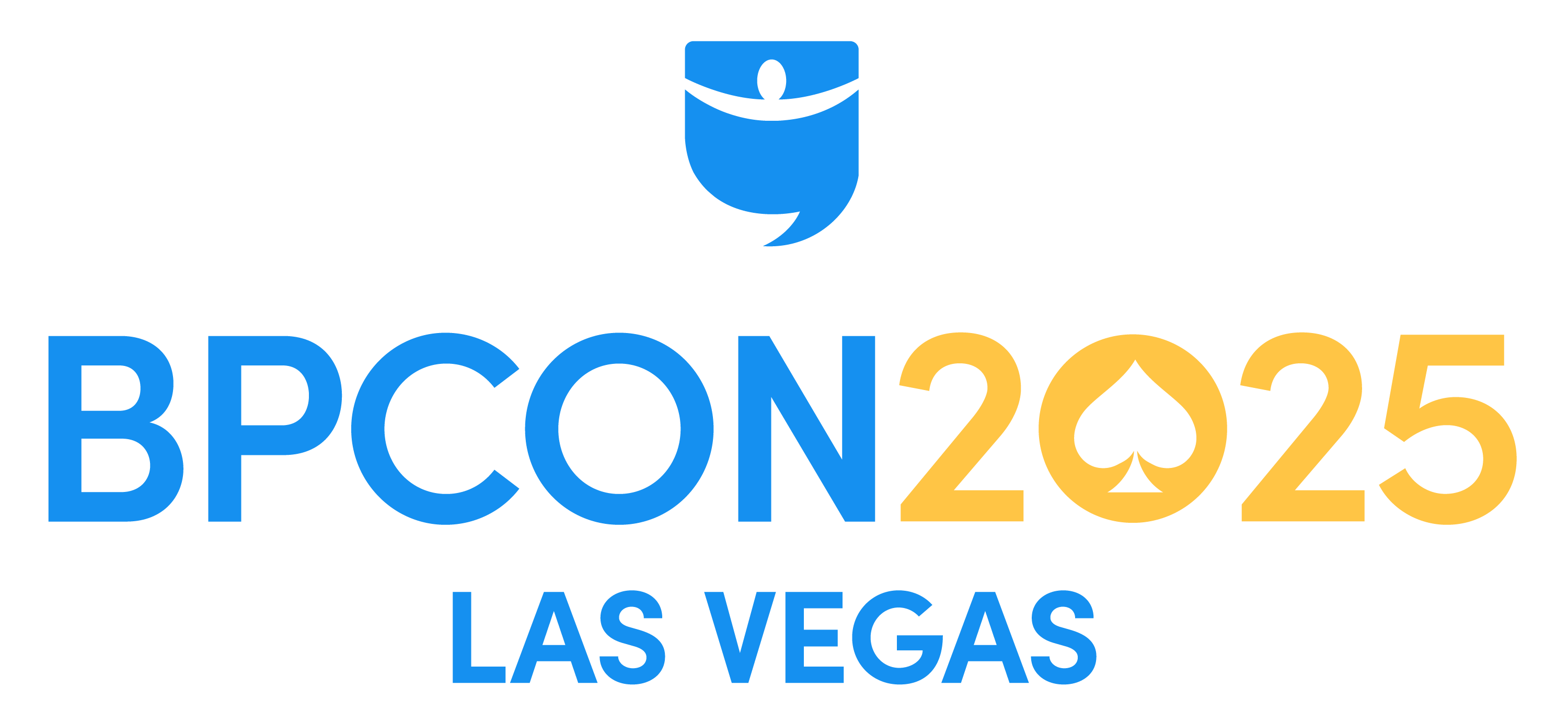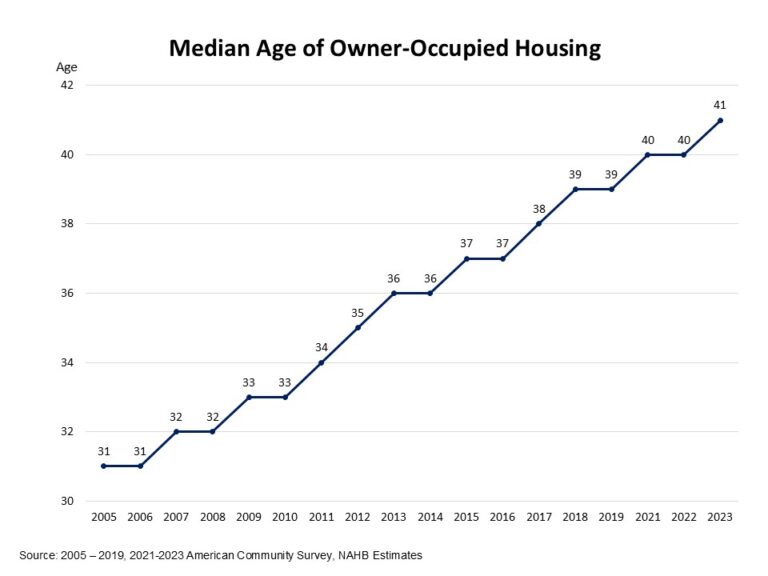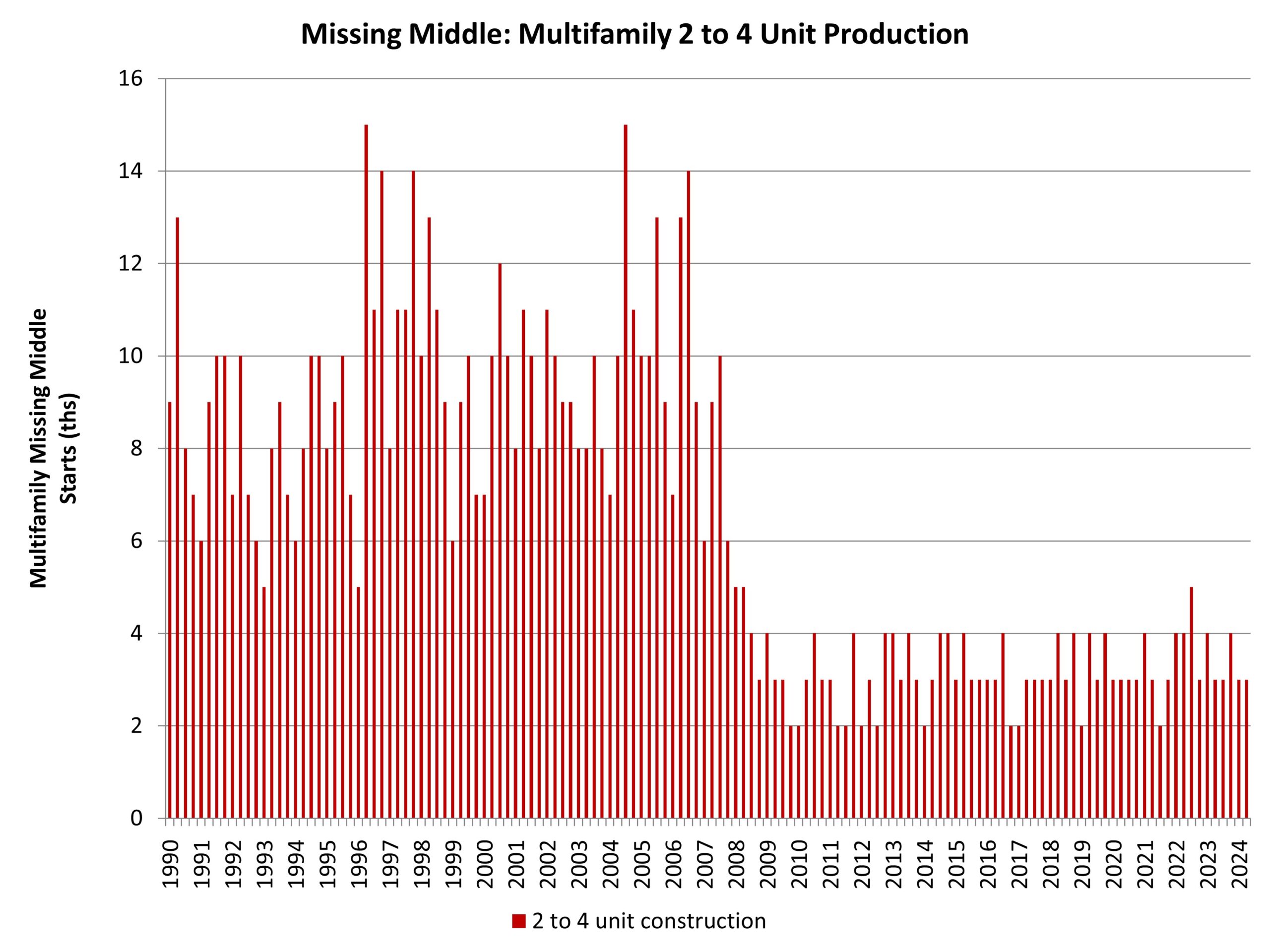Ashley:
Starting with just one property and a dream. Our guest today turned her passion for real estate into a multimillion dollar portfolio. You’ve ever wondered how to go from your first deal to financial freedom? You won’t want to miss this episode.
Tony:
That’s right. Our guest today is an investor who left her teaching career behind and scaled up to multifamily success in just five years. Now, her journey wasn’t always easy, and today she’s sharing the heart lessons and the big ones that got her there.
Ashley:
This is the Real Estate Rookie podcast. And I’m Ashley Kehr.
Tony:
And I’m Tony j Robinson. And give a warm, warm welcome to Deandra. Welcome to the show. Super excited to have you.
Deandra:
Oh my God, thank you so much. As soon as you started the introduction, I was like, who are we talking about? You. You’re amazing. Oh my God, it’s me. How fun. How exciting.
Ashley:
Deandra, let’s start off with what first got you interested in real estate investing?
Deandra:
The first thing that got me interested in real estate investing was not being able to pay my rent. It truly right. I graduated from college, I majored in chemistry. I thought, here’s the big bucks you’re going to take a few years off before you go to medical school. You’re going to get some money. You’re going to live by yourself. You’ve done the thing. It’s time for sex in the city, it’s time for girlfriends. You’re going to go out, get your apartment, you’re going to have a salary job, pay the bills. Carrie was able to get those blahniks writing a blog once a week and I was like, I’m college educated so I’m going to be different for me. And then I couldn’t get a job, so I was cobbling together all these part-time gigs. Then I couldn’t get an apartment. I didn’t have credit or my credit was bad because I had student loans and I didn’t have a job to pay and I had credit card debt and I had a car note and I looked up six months after I graduated and thought, this is awful.
I am struggling every month to pay just a rent in my car, note to put gas in my car to get to work that I need to get the money to put the gas in the car to get to work. There were only two things I could change. The only two things I can give up were my student loans. They wouldn’t take the degree back. Sucks to suck. And it was my housing. And I figured, okay, well I’m paying this much for an apartment that I don’t own. If I could get into a house, then at least I could have a lower cost of living. And that’s really where it started. I genuinely feel in my whole heart, if I were to have succeeded right out of college, I would not be where I am right now.
Tony:
Isn’t it crazy how sometimes the difficult moments in life forced us to discover what we’re really capable of? And it sounds like that’s exactly where it pushed you
Deandra:
A hundred percent. And it’s it’s good on the other end and sometimes I’m like, Hey, maybe we could have got this lesson without the hard work, but I don’t think that’s quite how you learn.
Ashley:
So what were the first steps that you actually took? What was that first actionable thing you did to lower your cost of living?
Deandra:
Yeah, remember the confidence I had when I thought this was all going to be super easy. I was going to get the dream apartment, pay all my bills, go out with my girlfriends all the time. I went straight to the bank. So I just was like, oh, just go buy a house. How hard can it be? And the very first thing I went to do was speak with a lender and say, this is where I am right now. This is what I make. This is what debt I have. Let me know the beautiful luxury condo I can go buy tomorrow. And she said, you can’t. We don’t have a single program you’re qualified for. Your credit is okay. It was like low 600, but simply your debt to income is just too high unless we can find you a $200 mortgage, which we can’t. And even if we could, I would not suggest that to you because other things are going to go wrong with this $200 mortgage. You somehow managed to get, you actually need to rework your entire profile. You need a better job. You need to pay down some of this credit card debt. You need to get a handle on your finances before you can take that next step. But that clarity, let me know if I wanted to achieve this goal I’m setting, I have to make a big change right now.
Tony:
And what were those changes? I think there’s probably a lot of rookies, deandre, who are listening who are probably in a similar position where they’ve listened to the podcast, they have the desire, they have the want, but when they went and sat down with their lending professional, they got the same news. You have no business being in this office right now. You got to go clean some things up. So what steps did you take to eventually put yourself in a position to get that first deal?
Deandra:
It was a very humbling moment because I understood the things I had to change were not going to be quick, number one. And number two, I had to also accept that some of these issues are my own fault. And that was probably the harder aspect of some of the decisions you are making or what are causing the pain here right now. You did not need this apartment, this big old two bedroom that you were going to fill with all of these things when you bought it. You maybe didn’t need to adopt this animal that you can’t really afford to keep going. You didn’t need this particular car, you didn’t need this degree. There were so many things of like, wow, if I would have done something else, this might’ve been a little easier. Well, what had to happen was I had to humble myself. I had to make a list.
I had to start my board of directors, which I like to tell a lot of my clients to have. Right? These are people you trust to be honest with you about what’s going on and whose opinions you respect to follow. And I had to say, I need help. I need accountability. This is going to be a long journey in front of me, but I want this. These are all the reasons why and start working that process. One of those things was I had to get a better job, even if it wasn’t in my field, I had to make more money because that was, I only knew house psyching at that point. I was 22. That’s all I knew I had to do. I was like buy a house and live in it. That’s all. That’s the only technique I have. But I needed to make more money.
I needed to pay off my credit card debt, which meant the part-time jobs I was working. I continued to work those on the weekends and I needed to drastically change the way I spent. I could not just keep buying stuff on the road. I could not keep having the, I love the jokes about the 4 99, the 6 99 comes out of your debit account and it comes out and you’re like, what am I paying for? All of that had to go. I was so committed that I didn’t have internet. I didn’t have, I tell you that $50 was going to the house. I said, go home and go sleep. Read a book, go volunteer. But I cut everything that I didn’t need. I started biking to work that stopped, but I tried, right? There’s certain things that didn’t quite work. You try some other stuff, but I really solidified what I wanted, made sure I was showing and telling other people about what I was doing and holding fast to the skills that I knew were going to get me to that first property.
Ashley:
So Deandra at this time you were working as a teacher. This was the job you had when you were resetting your budget?
Deandra:
No, my first job, I was a lab tech, so I was making you ready. You ready Ashley? I was making $28,000 big money you guys can’t see. She’s very, very excited. It was a lot of money. I was bringing home $2,000 a month trying to buy this property.
Ashley:
Your start story is very similar to mine in the aspect that when I graduated college I was interning an accounting firm and I thought it’s payday. I can’t wait to get that contract. And it was a 50 cent raise per an hour. That ended up from going from an intern to full-time. I just spent all this money on the degree and 50 cents and it was just like, you expect this big, you’re going to be rich. You got this big salary. And then it’s just like, so how did you transition to the teaching position during this timeframe?
Deandra:
Yes. So I actually was able to get the first property when I was still working as a lab technician. The teaching helped me get the next one again. I was like, oh, so if you just make more money and spend less, you can buy more properties. And I saw teaching. I missed that community aspect. I missed that more people forward position. I used to teach, I was a TA in college, I missed that. So I wanted to go back to it and that was like a $20,000 jump when I went from making 28,000 as a lab tech to $48,000 as a teacher. And that’s what helped me then get my first duplex right or get the first seller financing property. But I really did it under the 28,000 I was able to squeak by because I had done everything I was told to do and I went back to that same lender 18 months later, slapped down that all of the results she had told me to work on and was finally able to get qualified.
Tony:
So I just want to hit this really quickly because I think it’s important for the rookies to understand, but first, kudos to you because you went absolutely berserk it sounds like, to try and fix your life and save the money. And I’m still stuck that you cut off the internet. That seems like almost like I can’t even imagine doing that in this day and age, but kudos to you for making that jump. But you said it took you about 18 months, which is in the grand scheme of things, not an incredibly long period of time to change your life forever. But in the short term, I’m sure it felt like a very painful 18 months. So just kind of walk us through Deandre. What did that first deal actually look like? Did you buy a big house? Did you buy a condo? What were the numbers on it? Just really quickly so we can paint that picture for the audience.
Deandra:
Absolutely. So my first deal ever was a two bedroom townhouse. I got pre-qualified for $85,000, all that work 18 months later. And again, I think Ashley can understand that 85,000 seemed like an enormous amount of money and I hadn’t really been looking at properties up until that point because I was like, that’s going to distract me for what I’m doing. I’m in this stage focused on this stage and I finally opened up Zillow and I said, here we go, typed in my numbers, there’s going to be so many properties. And there were three and that was it. There were three properties listed and I didn’t have a realtor. Realtor and I hit the call agent on Zillow and the man who is still my broker to this day picked up the phone and he said he sells million dollar farms. And he said, what’s your budget?
I said, 85. He said, let’s go meet for coffee. Let’s talk about what’s there, what can we do for you? And we went to see those three properties. The first two were complete burnouts. They had just had a fire, they were being sold at auction, but they’ll say, we’ll take your 85, I’m not going to qualify. Right? That’s not going to get through any sort of underwriting. And the last one was the property I wound up buying. It was a two bedroom townhouse. It was $85,000. It was very dated. Nothing had been updated since it was built in the mid seventies, but it was livable immediately. And the whole time we’re walking through the property, we’re knocking on walls, we’re looking for mold. We’re just trying to figure out why is this property so cheap? Why has it been on the market for three months? What is wrong with it at a backyard in a parking space in the middle of Charlottesville? What is going on? And maybe it was just supposed to be my property, I don’t know. But I pulled into a full offer.
The concession, the agent fees were already covered, but I asked for 3% seller concessions. That was a different market. I asked for some help with closing costs and I got it. We did the inspection. They didn’t have to fix anything and that first mortgage was $535 per month, which was significantly less than what I was paying in rent. So I said I did it this 18 months, even though it was long, I could finally set up for internet and hear me, Tony, I got all of the first time benefits. They said, new customer, who are you? I got all of that stuff, but it was $535 a month. And I said to myself, if I could just do this, this is enough. I’m already saving my car payment, just removing from that rental to this property, but I have two bedrooms and I don’t need both bedrooms. So what if I got a roommate? What if I got someone else to come in rent in Charlesville at that point was still $900 a thousand dollars. So if I just charged a friend 600, they’re winning and I’m winning. And that’s what happened.
Ashley:
So you’re covering your mortgage payment.
Deandra:
I went from having a eight, $900 rent payment to nothing with one purchase. And so even if that was all I did, like Tony said, that 18 months seems insignificant to what that would have done for the rest of my life by no longer having to pay for housing.
Tony:
That is an absolutely amazing story. And again, I try and harp on this point whenever I can, but I think so many people who are listening are going to hear that last part of your statement. I got the house and I don’t have any living expenses, but they’re going to overlook the 18 months of hard work that went into that. So I’m so glad you shared that before because I think it’s so important for Ricky to understand that sore. I can tell that you’ve got a lot of good things to share and I want to keep going into this. We’ve got to take a quick break first when we get back, I want to hear about how you started to transition into multifamily because I know that’s where you kind of made a name for yourself. But first we’re going to take a quick break to hear a word from today’s show sponsors. Alright, we’re back with Deandre. She just shared an amazing story about how 18 months of just hard work, nose to the ground grinding every day completely changed her life and got her living. But I know that at one point, Deandre, you made the decision to kind of transition from the first property with the townhouse to multifamily. So what was that aha moment that made you want to make that transition?
Deandra:
So there are two levels to multifamily. There is still the house hacking multifamily, which I’ll start, which is, hey, I just don’t want to have roommates anymore and I’m getting married and my husband doesn’t want to have roommates anymore. So we have to find a way for these properties to still make money without sharing a bathroom. And that led me to duplexes, right? Duplexes and quads. I don’t find very many triplexes, but in my experience, duplexes and quads where I could still get primary residence lending, primary residence loans, three and a half percent, 5%, and I could have some separation between my tenants and I instead of sharing all of those common spaces. That was the first aha. Like okay, multiple doors can be bought with one loan, multiple systems could be minimized. I don’t have all of these roofs now and I don’t have all of these different lawns and all of these septic systems to maintain. If I could just put more properties, more units under one roof.
Ashley:
So less overhead in general?
Deandra:
Yes, absolutely. Especially because I was still managing all of these properties while I was teaching, right? So me and my lawnmower just bouncing down the street from duplex to duplex, mowing the lawn, going to the next property.
Ashley:
So you were Neil only just managing, you were maintaining these properties too.
Deandra:
Me and YouTube went together real bad those first few years. They would say, my toilet has a clock. And I would say, well, give me two hours. You go do something else and me and YouTube are going to figure this out because that plumber said his show up cost is $200. We’ll figure this out first. I’m going to call my dad. I don’t know we’re going to learn today. So after the two and four, I wanted to go bigger, but you can’t live in those anymore. Husband very happy about that. He got to be more stable. But that meant I have to get commercial loans or different kinds of lending. I wasn’t going to get anything in Charlesville anymore. That was way outside of my budget. So I thought to myself, where are bigger properties? Where are they cheaper? What does that mean? I went to commercial sites just through my search all through Virginia and what kept popping up were motels. That was the budget I set. I had set a two, this is so funny, getting to recount. It is really exciting because again that Oh, you just want a bigger property for $200,000. You just do it. You just keep going and you put it out there. So I full heart, full mind, open thought $200,000 was going to get me a long list of multifamily properties. It did not, but it did get me a lot of motels on the side of the road.
Ashley:
So up until this point, what did your portfolio look like before you started to pivot to looking at motels?
Deandra:
I had a collection of duplexes at about three or four short-term rentals that were condos. So then I didn’t again have to worry about roofs and all those other pieces, but maybe six to eight at any given moment we were flipping and moving single family or small multifamily properties that I was managing as I was still teaching.
Ashley:
Okay. So now you’ve decided to pivot into motels to grow and scale your portfolio. What was the first actionable item you did once you saw this list of motels that popped up?
Deandra:
I went to go see them. I think I had to get my eyes on what does this actually mean? What do the insides of these properties look like? I went to the permitting office. I’m a big fan of just showing up and saying, Hey, I got a goal. What does this mean? How do we change a permit? What is zoning lady at the zoning office? I can bring some lunch if you’ll just tell me.
Ashley:
That is such a great point. If you don’t know how your county city works is go to the town hall and ask and they will point you into the direction of the person that will know that question. But it’s so much easier if you kind of live around the area to actually just go there and ask someone in person
Deandra:
And you’ll be surprised at how few person to person interactions the people at city council or town hall have. They’re so excited to be like, you care about what I spend all this time doing? I do indeed, yes. If it isn’t zoned for right thing, what is the process to change it? How long does it take? Has someone already failed? All of this information is available. It might not be organized super well online, especially for smaller or more rural counties, but you just go and ask. And so I went to see the properties, I understood the zoning laws behind them, saw what permits I would need to pull if I wanted to adjust some stuff and thought again, I like this. This is possible. This gives me a 10 unit in my budget and I can figure out how to put up cabinets. We’re going to have to call a plumber to add a kitchen. How hard is drywall with carpets? I see people on YouTube do it all the time. And from then I would have the next big step was to go stalk to a lender. How do I get the money since I don’t have the cash for a purchase like this?
Tony:
I just want to call out quickly. Deandre that I think you’ve done a phenomenal job of not letting, I guess I’ll frame it this way. I think where a lot of rookies get into trouble is that they don’t take the first step because they can’t see the last step. And I feel like you’ve done a phenomenal job of having an idea of the end goal, even though you don’t really know how to get there and just focusing on, okay, what is the absolute most important next step for me? And you mentioned it earlier, I don’t even know if you realized this, but you said that as you were really working on getting yourself financially ready, you weren’t even looking at real estate because you said, that’s not the phase that I’m in right now. And the same thing as you’re doing this search for the multifamily. Like, hey, I don’t even really know what the conversion process looked like, but it’s in my budget, so lemme just start there. Let’s just see what I can do next. And I think that’s such an important lesson for Ricky’s is that you don’t always have to see what the final step is. Just focus on what is the most important next step for you and focus on that piece only
Deandra:
100%. And if I would even launch further off from that, Tony, it’s I don’t think you even know what the final result is supposed to be. That’s one of the biggest ones we are starting. We are rookies in this. You might have an idea but also don’t be so locked into that idea that if the townhouse pops up, you don’t take it right? Don’t be so locked into I need a 16 unit four story that when the motel show up you say no, we’re starting, like you said, we’re in the phase of like this is my budget. What properties exist? What can I do? Because maybe it would’ve been a quad who was zoned for redevelopment. That could have been something that would’ve gotten me my multifamily or it was land that has the ability to be built on. That could have gotten it to me too, but if I was so stuck on what the end result from somebody else’s story was, I’m going to miss my opportunities a hundred percent
Ashley:
Up until this point, how were you financing the other deals the majority of the time? Was it saving up the down payment and doing conventional lending?
Deandra:
It was teaching. Yeah, a hundred percent. It was. I know how to live off $28,000. I’ve been doing it. So every other dollar that comes in is to real estate. I don’t have to pay for housing anymore. I know how to live here. So when I made $48,000, that was like a $15,000 savings immediately per year. I just didn’t change my life. We’re going to keep biking to work, we’re going to keep shopping on the days where they have sales and all the food. I’m clipping coupons. We’re focused here. This Airbnb money goes into the account. So now I’m saving where I was struggling to even pay off my regular debt month to month, I’m now saving 20 to $25,000 a year just by not touching both the money that came in my lifestyle. I also didn’t need to tap into any equity at that point because of that savings, which allowed me to save it for these bigger properties.
That’s what I was hoping for of like, let me just keep rocking and rolling with what I got out, what I have now, excuse me. And then when I ever find those larger properties, if I need to sell or get a heloc, any of those things I can. So when I transitioned to motels, when I went to go get that commercial loan and I’m used to 3%, remember, I don’t know, I’m just like, what do you need? I was like, okay, 5% of 200 done. I can write a check today. They said, no, it’s 20. 20.
Ashley:
20 is actually pretty good. A lot of the times it’ll be 25 30 for a commercial loan and I didn’t
Deandra:
Know that then, but it was 20 and even now my first interest rate was six and a quarter and I darn near flip the table six and a quarter. What do you take me for? My other loans are 3.5%. This is 2018. 2019, I’m getting 3.95 and you’re talking about double what? I’m used to the life of commercial loans, but the way I paid for that was I finally had to go to one of the assets I had been working on all this time and I just sold it.
Ashley:
And then you took the capital from that to use as your down payment for that 20 At the time when you made this pivot to motels, how long were you an investor? How long had that property been marinating building equity for you?
Deandra:
I had been an investor for four years, almost like to the day when I bought my first motel and the property I sold, I bought as a flip the year prior. So in 2018 I bought that first. I bought that condo, went in, completely renovated it, used it for Airbnb, used it for short-term rentals, and about nine months later decided I’m going to sell this. This has a lot of equity, sold it as a business as well. That’s how I was able to sell it to another investor. Look how well it’s doing. It’s don’t touch it. Take what is going on. You’re walking into a system that works,
Ashley:
Turnkey, short-term rental.
Deandra:
I got a little extra equity on the backend because they had a business, not just a property. And then use that as my down payment.
Ashley:
The takeaway from here is the strategy piece, and James Dard talked about this when him and I just recorded an episode for the real estate show and he’s going through all of these things that goes through his brain to actually strategize, and that’s what I’m seeing here with you too is there was a strategy, there was a play as to what these properties were going to do for you besides just generate cashflow. All of these, when you can interwork these things and your brain can work that way to really look at more big picture, what are the other benefits to adding real estate to your investments besides just cashflow? And so what are the tools and resources that can actually bring you, this was your down payment.
Deandra:
Part of that learning of finding those tools and resources were, like Tony said, don’t get so obsessed with the next step, but also experiencing things like this where I get to hear what are other people doing? Some people are just saving. That’s what I was exposed to. Some people are using their equity by selling the property, but you know what, I never heard Ashley never heard of a 10 31 exchange. Not at that point. So that bill came due and that sale wasn’t prepared, but I’m still happy I did it. It wasn’t like I needed to learn all of these things before I got started. You had to pay a tax bill. It happens. You had the money. That’s why you got tax on it. It was profit, you have it. But it was learning through just experiential before I needed the information. Hey, these are things you can use. These are plays you can make in real time When you get there, refer back to this, but don’t stop collecting it as you go.
Tony:
I want to hear a little bit more just about the journey of this. So you sell the property that gives you the funds to actually take this deal down, but I mean you’d never done a motel conversion before. You had never done a rehab project of this scope before. Once you closed, what was your first step? Did you just jump into the rehab immediately? Was it pulling the right permits first, just once you closed ’em, just curious steps. What did you do next?
Deandra:
Yeah, luckily it was a suite style motel, right? So there weren’t any permits to pull because they were already set up as apartments. We just had to get them to apartments that people could use on a regular basis, not just like a burner or two on the countertop. We need to switch to real appliances. But luckily, luckily there were no permits needed. We needed to upgrade panels, right? Called into the electrician as a motel, remember they’re all separated. So it was just one at a time. Just knock out this one, get it done, rent it, knock out the second one, get it done, rent it, and just like going down the line,
Ashley:
This seems like the dream scenario for a motel conversion. Everything is set up
Deandra:
Now. Having converted properties that are not sweet style. I prefer sweet style and I was lucky enough that that’s how it was already set up. We didn’t have to install the kitchens, we didn’t have to change the drain lines. We needed to get it to a place that someone could live here for 30 days and not just two nights and not touch anything. We needed to get toilets and appliances and heaters that could handle constant use and not just an occasional touchpoint, but that was unit by unit would take maybe two or three weeks per unit, get it ready, rent it, and move on.
Tony:
So in total, the project took I guess how long? Five, six months give or take.
Deandra:
The first one in total probably took the whole year. I would do about one a month because I was still grading papers, so I did not have all the time trying to take video at the same time. And because the rents were so low, it didn’t feel like a huge loss if I waited a little longer, if I could help more people understand what I was doing. But it probably took the full year because do you know what happened in that first year covid? So halfway through the purchase, the world shut down and it was like, okay, maybe I need to hold onto some of this money because all of a sudden all my tenants were home all the time, which was unexpected. I couldn’t work as long. My contractors were sick. So it took a little longer to get everything done because 2020 came fast that year.
Ashley:
Well, we’re going to take a short ad break, but when we come back, I want to hear more about the tenant side of things. How were you able to manage all of these units effectively? We’ll be right back. Okay. Welcome back to the show. So you had mentioned that during covid you had to figure out how to manage your tenants during that time. So what are you doing right now in your business as far as the property management are? Do you have a team for this or did you outsource?
Deandra:
I still self-manage. I have a good time doing it. I’ve gotten a lot better with that. First motel is when I realized if I was going to hire a manager, it would need to be someone on my team and not a management company. My rents are not very high purposefully to make sure that people have access to clean, safe, affordable housing. But even so, there’s a level of care that I still wanted that was not going to come with a 10% overall fee. A lot of the property management companies that we’re finding were very reactive. When something went wrong, they would fix it, but sometimes you don’t know something is wrong for a long time or we could have been doing better in advance and that’s why now I hire people under my own company to be my managers. So if I do outsource it, I have live in handyman if I can for the bigger buildings. They’re under my payroll not working for somebody else so they can be under my expectations and not their companies.
Ashley:
Donni, you do something similar at your motel. You have somebody that lives on site correctly that works for you?
Tony:
Yeah. Yeah, we do. For the one motel that we own, we have onsite management and we found that to also make our lives a lot easier because they’re there 24 7 and it does, I think simplify the process, the owner because you get someone who just knows the property so well and they can respond to most things without you necessarily having to jump in and intervene yourself.
Deandra:
They can also see things I can’t see because I don’t live there. They see a level of potential because this is their daily living experience. The reason we started adding cigarette disposable containers was because my handyman said, you need to do this. People are smoking outside. They are doing what you ask. But when they flick the buds, this can be a fire hazard. This is difficult to pick up. This $200 investment can cut out hundreds of dollars of my labor trying to keep this place clean done. But if he was just billing me at the end, I wouldn’t have noticed those things and he had every right to just build me at the end. But those are little things that someone living on site can pick up that I can’t. That’s that proactive approach that I was looking for more so than the reactive.
Ashley:
That was actually going to be my next question as to what are some examples of how to actually be a proactive landlord than reactive? Do you have any examples of a situation where you don’t have somebody living on site that is the maintenance person as to how to proactively manage your units?
Deandra:
So I don’t have anyone living in my smaller complexes, so anything under six units, I don’t have the space to then pay for to lose a unit in terms of vacancy every month. So what happens with is I try to cluster those properties. I’m big. I like to call myself a cluster investor where if I’m going to buy a bunch of quads, they’re in the same county they’re with all within one hour. So then I just hire someone who is almost like that county representative. Their job for five to 10 hours a week is to drive by those properties, see what’s going on with the exterior. They’re already doing the mowing that I can’t do or cleaning the gutters, but we try to get into those units once every six months to service the HVACs, make sure the water heaters are okay. We’re not saying you need rust in the pans, and the biggest proactive tip I can give is to ask your tenants, that is the biggest.
What do you need? What is working? What is not working? And this is not trying to catch you or make sure that you’re paying for it. What can I do better for you? One of the reasons I installed the laundry room or went into laundry was I had an empty space and one of the motels, right? I don’t need this office space anymore. We have now completely converted everything. We have the shutout back for all of the extra materials. What should we do with this? A hundred percent. I expected them to ask for a community space. When I sent out those polls, I had already started looking for how we’re going to decorate, where’s the kitchen going to be? That’s a hot, and they came back and set laundry and I said, oh my bad. Let me reel that in. You guys want onsite laundry?
I can’t put in every unit, not for $400 a month. I can’t, but I can put three, four machines in this communal washer dryer space. I can calculate how much water it takes and how much electric it takes to make sure there’s a profit at least turning. And what that did, talking about being proactive is I got from my exit letters or my, I’m staying letters. I got, the reason I’m resigning another year is I no longer have to travel for laundry. That was a proactive decision based on my tenants just telling me I need this thing. So now, even if it’s not the motels, now, I know they had the office space, but those six units sometimes have basements. That is a very easy, hey, two washers, two dryers, easy to vent outside. I don’t have to manage it all the time. They’re coin operated, they’re electric. We don’t have to worry about a gas leak or anything along those lines, and I get to help my tenants in a way that also helps me.
Tony:
Yara. One last question I want to ask before we let you go here. I know you oftentimes talk about understanding what unquote enough is, and I think oftentimes in the world of real estate investing, we get focused and fixated on numbers. I want to get to X units or whatever it may be. But I guess why is it important to maybe define what financial success actually looks like versus just chasing this kind of unlimited growth?
Deandra:
For me, that definition, trying to identify that specific number made sure that I didn’t miss the results of all the work I had put in. I think if I didn’t specify what that number was, I was going to find myself right back in the spot. When I graduated college, I have all of these things, but I’m barely able to pay because I’m always looking for this next thing or I was going to find myself without gratitude. I was going to find myself losing other perspectives because I would only be focused on this. The only success is more the only success is greater and better when in reality a lot of this started because I just couldn’t pay my bills. So to get to a point where now my portfolio makes more than I do teaching with a 10th of the work to still sit in that and say this is not enough, would be, I think, incredibly disrespectful to the effort I have put in number one, but to the person who gave up 18 months of internet to the version of me who lived with roommates for the version of me who was waking up at 5:00 AM to clean Airbnbs to go to school by 7:00 AM to then teach track to then go deal with the clocked toilet and get to sleep at midnight to do it all over again.
There’s so much of our lives we give, I’m 10 years in, this may will be 10 years since I bought my first property, and to not be able to rejoice in those moments where you’ve reached the goal, it’s okay to set new ones once you get there, but to not be able to rejoice, what is the point of all of this? What is the point if you forget that you were doing it to spend time with your family or you were doing it to save for retirement, or you were doing it to help pay for college tuition? And that number always helps me remember both. If I had to stop right now, I’m still living a life beyond what I could have imagined at 23 years old. And also make sure that I never get personally so risky that I jeopardize my tenant’s abilities to stay in their homes. It is really important to me that the company I have built off, people renting from me isn’t threatened because I got lost along the way and I am foreclosing on a property or my mortgage is underwater or any of those things. And what holds me back is remembering I have made much more. I have done so much past what I initially expected out of this entire thing to not ever get so caught up in the next a hundred thousand or the next 10 properties, whatever that might be.
Ashley:
I know you said that Tony asked a great question, but that was a really phenomenal answer. Thank you. Yeah, that was really great. The last thing before we wrap up is when did you stop teaching and actually go into real estate full time? What was that moment in time like for you?
Deandra:
I was teaching and as a teacher, you think from August to June, that is your year, right? It’s not January to December. So when I first started teaching in 2018, I was teaching full-time, still managing everything. I found my first motel that year and I thought, I’m going to finish the school year, right? Even though I could maybe think about leaving, I’m going to finish the school year, June, 2019, rolls around and I can take the leap. The property is halfway renovated, the other properties are doing super well. I don’t have to keep teaching if I don’t want to, but I was way too scared to just go cold Turkey. I didn’t know if we were trying to have a child. I didn’t know what I was married at this point. What’s my next step? And I said, I’m too scared. I’m going to go halftime.
How about that? Now I just have to teach every other day instead of every day. That’ll give me more time to work on my properties. I’m only in school two days a week. February of 2020, I go into my principal’s office and I say, I’m done. Here’s my resignation letter. A great time to quit. I tell you what, that mid February, Valentine’s, February, sorry, Valentine’s 2020. I said, here’s her investigation letter. This has been wonderful. I want to give you guys all the time. Again, at that moment, I could leave, but we think in terms of the school year, I’m going to finish June. I’m not going to let my students down. We’re going to finish this year. Then I’m done. And then we got sent home in March and I was like, okay, good thing I have all this time. These properties need some hands-on work. But that’s when I was able to leave. So about four years after I bought my first place, I felt comfortable saying, I am making 50,000 from properties that still need management, but I’m only making 48 as a teacher. So if I can’t step away right now, then how am I living on my teacher salary anyway? Right? If I can’t make it work on the same amount of money, but a 10th of the time, then something is wrong regardless, and then it only kind of exploded from there.
Ashley:
Well, thank you so much for sharing that with us. And your story today is going to be so inspiring for so many rookies listening. Where can they reach out to you and find out more information?
Deandra:
Absolutely. My name is Deandre McDonald. You can find me through that on all socials, TikTok, Instagram, YouTube. You will also see me under Simple real estate if you don’t see Deandre McDonald, but those are the two, either my full name or simple real estate. We are here to make real estate simple.
Ashley:
When our producer brought your name to us as like, here’s somebody we’re going to be interviewing, I was like, I know her just from calling you on Instagram. Wait, no. I don’t actually know her, but I feel like I know her.
Deandra:
That is awesome. It happens. It’s happening more and more when people will see me outside and be like You. Right? I’m like, ah, let’s take a picture. Let’s take out so fun.
Ashley:
Well, thank you so much for joining us today. We really appreciate it. I’m Ashley. And he’s Tony. And we’ll see you guys on the next episode of Real Estate Rookie.
Help us reach new listeners on iTunes by leaving us a rating and review! It takes just 30 seconds and instructions can be found here. Thanks! We really appreciate it!
















Check plates for things like toothpicks, bones, olive pits and fruit pits, paper labels stuck on jars and sticky pricing labels left on newly purchased plates.
If you pull a glass dish out that’s been chipped, check immediately for broken pieces or shards in your dishwasher. If small enough, broken glass can start breaking down and get inside the system.
8. Use Your Machine’s Options
Check out the cycles and options on your machine, and don’t be afraid to use the ones that work best for targeted cleaning. The pots and pans setting, for example, isn’t just for washing pots and pans, but is for tackling a higher level of food soil.
If you don’t run your dishwasher every day, use the short wash and rinse cycles until you’ve got a full load. For example, if you load up your dishwasher at night but still have room for dishes after breakfast and lunch the next day, run a rinse cycle. This will rinse food soils out of the system before you run a regular cycle and will help cut down on odors.